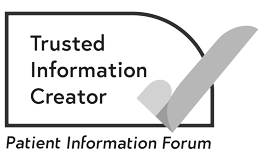Genes and chromosomes in chronic myeloid leukaemia (CML)
What are genes and chromosomes?
Chronic myeloid leukaemia (CML) is a cancer of the white blood cells. It develops when some white blood cells start behaving abnormally.
All cells have a nucleus that contains structures called chromosomes. Most cells in the body contain 23 pairs of chromosomes. Chromosomes are made up of DNA, which has a set of instructions that tell the cells how to behave. These instructions are called genes.
Genes and chromosomes
Related pages
The BCR-ABL1 gene
New cells are made when 1 cell divides into 2. Before a cell divides, it makes a copy of all the instructions stored in the genes on the chromosomes. CML develops when something goes wrong during this copying process.
A gene called ABL1, which is on chromosome 9, gets stuck to a gene called BCR on chromosome 22. They combine to make a new abnormal gene called BCR-ABL1. This is called a fusion gene.
This new BCR-ABL1 gene makes too much of a substance called tyrosine kinase. Too much tyrosine kinase can cause the bone marrow to make too many white blood cells. It also stops these cells developing into normal white blood cells or dying when they should. These abnormal cells are the CML cells.
Related pages
The Philadelphia (Ph) chromosome
When the BCR-ABL1 gene forms on chromosome 22, it changes how the chromosome looks. Scientists can see it when they look at the leukaemia cells under a special microscope. They call it the Philadelphia chromosome.
You are not born with this chromosome. If you have children, it cannot be passed on to them.
Most people with CML have the Philadelphia chromosome in all the leukaemia cells. It is only in the leukaemia cells. In less than 5 in 100 people with CML , the Philadelphia chromosome cannot be seen in bone marrow samples. But tests on the leukaemia cells can be used to find the BCR-ABL1 fusion gene.
How the Philadelphia chromosome develops
Rarely, some people develop a different type of leukaemia called atypical chronic myeloid leukaemia (aCML). It does not have the BCR-ABL1 gene and is treated differently to CML. Read more information about aCML on the Leukaemia Care website.
About our information
This information has been written, revised and edited by Macmillan Cancer Support’s Cancer Information Development team. It has been reviewed by expert medical and health professionals and people living with cancer.
-
References
Below is a sample of the sources used in our chronic myeloid leukaemia (CML) information. If you would like more information about the sources we use, please contact us at
informationproductionteam@macmillan.org.uk
National Institute for Health and Care Excellence (NICE). Asciminib for treating chronic myeloid leukaemia after 2 or more tyrosine kinase inhibitors (Published 03 August 2022). Available from: www.nice.org.uk/guidance/ta813 (accessed July 2023).
Smith, G, Apperley, J et al. A British Society for Haematology Guideline on the diagnosis and management of chronic myeloid leukaemia. British Journal of Haematology. 2022. Volume 191. Pages 171-193. Available from: onlinelibrary.wiley.com/doi/10.1111/bjh.16971 (accessed July 2023)
Smith, G, Apperley, J et al. A British Society for Haematology Guideline on the diagnosis and management of chronic myeloid leukaemia. British Journal of Haematology. 2022. Volume 191. Pages 171-193. Available from: onlinelibrary.wiley.com/doi/10.1111/bjh.16971 (accessed July 2023)

Reviewer
Consultant Haematologist and Honorary Clinical Senior Lecturer
Queen Elizabeth University Hospital, Greater Glasgow and Clyde
Date reviewed

Our cancer information meets the PIF TICK quality mark.
This means it is easy to use, up-to-date and based on the latest evidence. Learn more about how we produce our information.
The language we use
We want everyone affected by cancer to feel our information is written for them.
We want our information to be as clear as possible. To do this, we try to:
- use plain English
- explain medical words
- use short sentences
- use illustrations to explain text
- structure the information clearly
- make sure important points are clear.
We use gender-inclusive language and talk to our readers as ‘you’ so that everyone feels included. Where clinically necessary we use the terms ‘men’ and ‘women’ or ‘male’ and ‘female’. For example, we do so when talking about parts of the body or mentioning statistics or research about who is affected.
You can read more about how we produce our information here.




